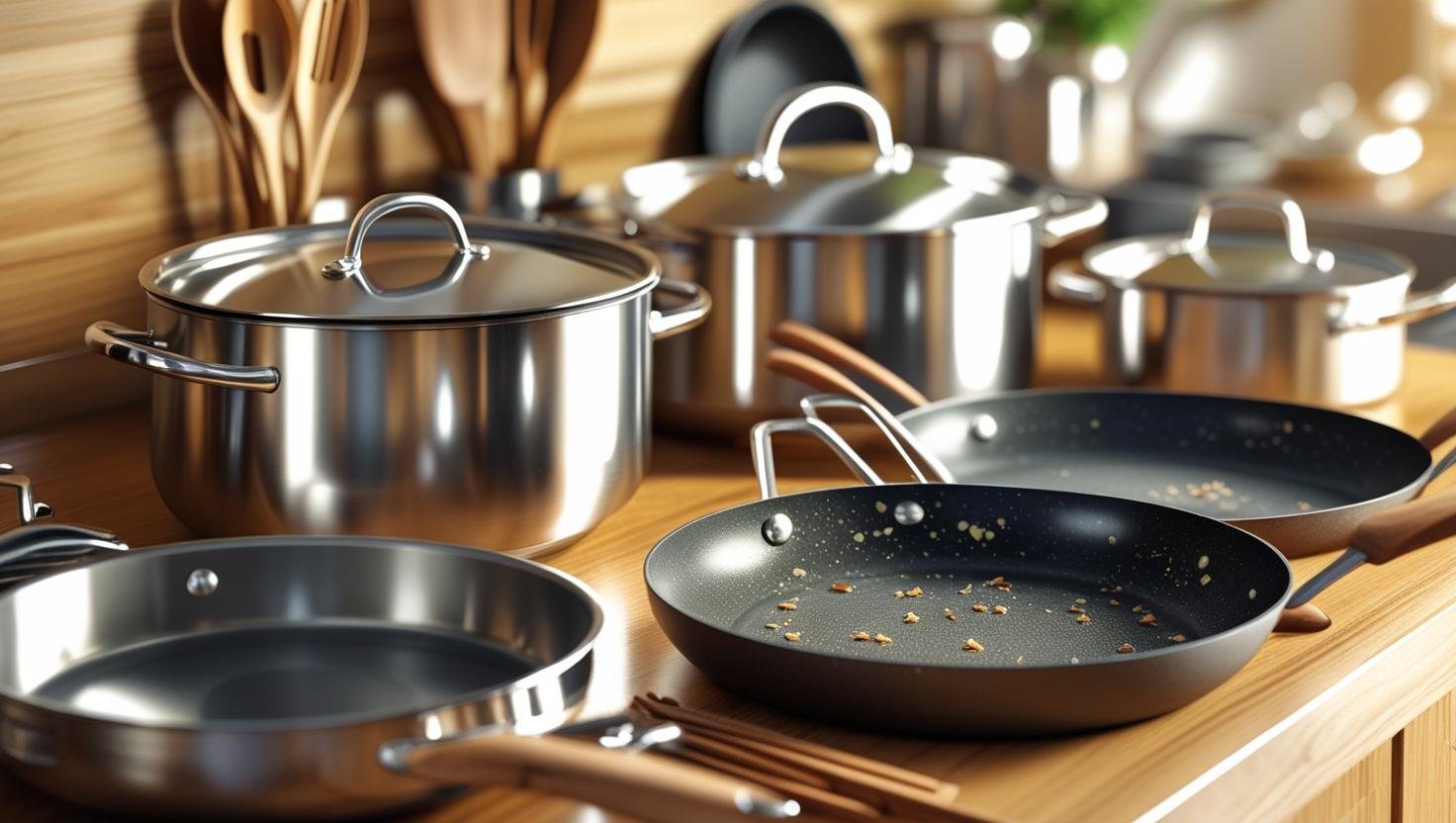Pots and pans are the backbone of everyday cooking. Though they don’t break like ceramic dishes, their lifespan and performance greatly depend on how they’re cared for. That non-stick pan that once gleamed with newness can end up scratched and discolored, its coating flaking and even affecting the flavor of your food.
But with just a bit of care, your cookware can stay clean, safe, and almost as good as new. TAIST shares easy yet essential tips to help you extend the life of your kitchen tools—so your meals can start with clean confidence and end with delicious satisfaction.
Non-Stick Pans: What Not to Do
Non-stick (Teflon or ceramic-coated) pans make cooking and cleanup a breeze, but they’re particularly delicate. The first rule is to avoid metal utensils. Metal spatulas and forks can scratch the coating, which leads to flaking and a reduced non-stick effect. Use silicone, wood, or soft plastic tools instead.
Avoid pouring cold water directly into a hot pan. The rapid temperature change can damage the surface at a microscopic level, shortening the pan’s lifespan. Let the pan cool naturally, then wash gently with a soft sponge—no abrasive scrubbing needed.
Stainless Steel Pots: Keep the Shine
Stainless steel is sturdy and sleek, but prone to water spots and discoloration. When burnt residue appears, simmer a mix of water and baking soda, let it cool, then scrub gently with a non-scratch sponge.
For extra shine, wipe the pot down with diluted vinegar. After washing, dry immediately with a clean cloth to prevent water marks and maintain that mirror-like finish.
Cast Iron: Patience and Payoff
Cast iron pans require more attention, but they reward you with unmatched durability and flavor depth. After use, wash with hot water—no soap needed—and dry it over low heat until completely moisture-free. Then, rub a thin layer of cooking oil over the surface using a paper towel to maintain its natural non-stick layer.
When storing long-term, insert newspaper or kitchen paper between pans to allow airflow and prevent moisture buildup. With proper care, your cast iron pan can last a lifetime—and only get better with age.
Ceramic and Enameled Cast Iron: Handle with Care
Ceramic-coated cookware is durable but can lose its smooth texture if scrubbed with hard pads. Use lukewarm water and mild detergent, and for oily residue, soak the pan with a bit of baking soda and water before wiping clean with a soft cloth.
For enameled cast iron or heavy-duty Dutch ovens, avoid steel wool. Stick to gentle brushes or cloths. Each material has its own care guide, but the golden rule remains the same: gentle cleaning, thorough drying.
Storage Matters, Too
Stacking pans without protection leads to scratches and dents. Place cloth or silicone pads between stacked pans to protect their surfaces. If space allows, hang your pans on wall hooks or store them in a pan rack for easy access and cleaner organization.
Keep frequently used pans at arm’s reach and place heavier ones on lower shelves to prevent strain on your wrists and back. When storing, prioritize convenience over aesthetics—make it easy to grab and cook.
Drying Is the Final Step
Don’t skip drying. Even a small amount of moisture left behind can lead to rust or stains, especially on cast iron and heavy-duty pans. After washing, dry thoroughly with a clean towel and let air circulate around the pan before storing.
Pay close attention to handle joints or screw areas—these can trap water and lead to damage if overlooked. Detail-oriented drying leads to longer-lasting cookware.
The More Care You Give, the Better You Cook
Your ingredients and recipes matter—but so does the condition of your tools. Clean, well-maintained cookware not only improves hygiene but elevates your whole cooking experience. A pan that shines with care is an invitation to cook with joy.
So tonight, take a quiet moment to clean a pan with intention. In that simple act, you’ll find a connection to your space, your meals, and the rhythm of a well-loved kitchen.
